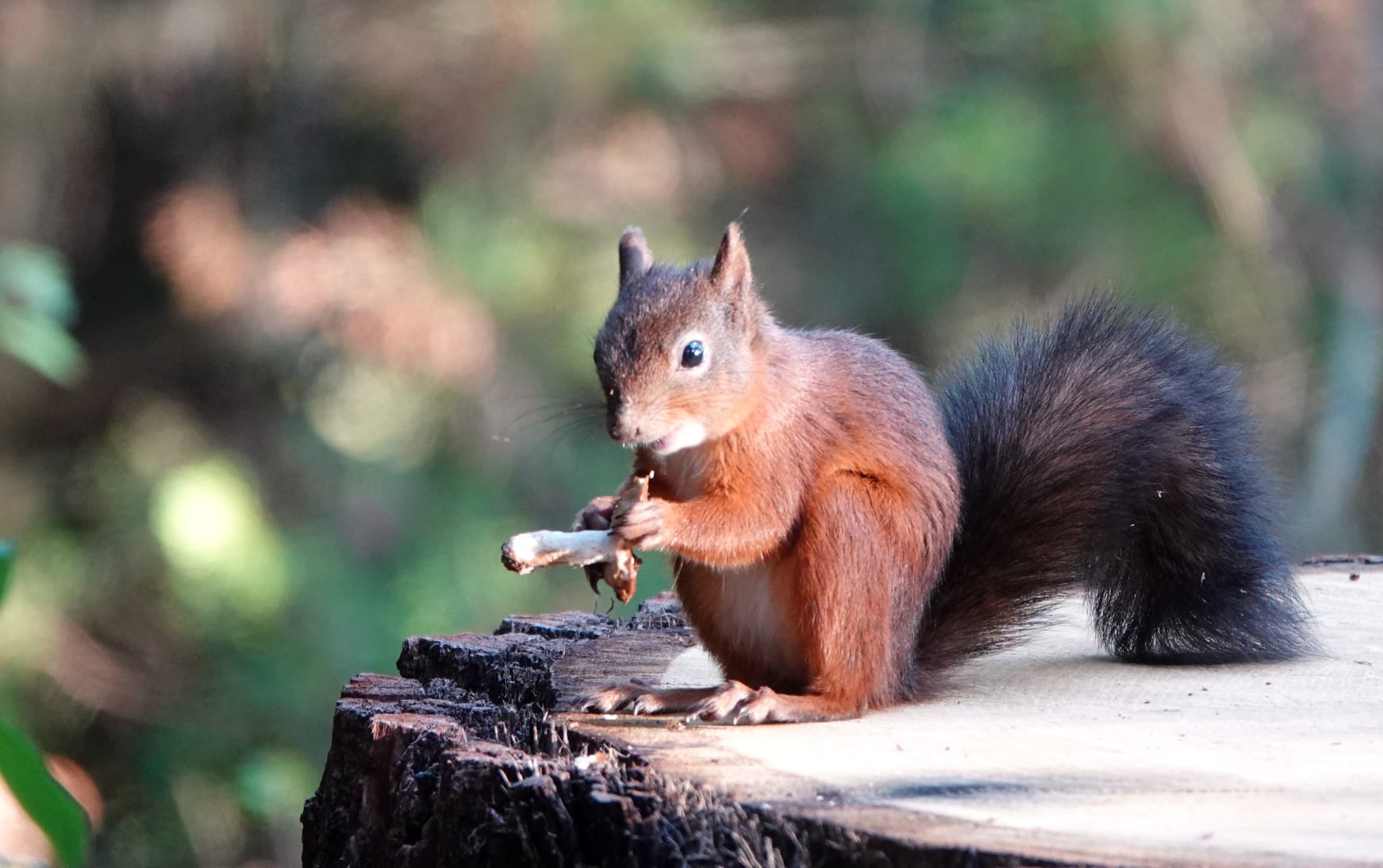The Crucial Transition: Red Squirrels from Three to Six Months
The period from three to six months of age marks a critical transition in the life of a red squirrel (Sciurus vulgaris). Having survived the vulnerable early stages of life, young red squirrels now face the challenge of gaining full independence, honing their survival skills, and establishing themselves within their ecological niche. This article delves into the developmental milestones, behaviours, and environmental interactions that characterise this significant phase in a red squirrel’s life.
Passage to Independence
By three months old, young red squirrels have typically weaned off their mother’s milk and are proficient in basic foraging skills. This period is marked by a gradual shift from maternal dependence to self-sufficiency. The juveniles start spending more time away from the natal nest, exploring the surrounding area and expanding their home range.
One of the key behaviours during this time is dispersal. Juvenile red squirrels often leave their birthplace to find and establish their own territories. This movement, driven by instinct and necessity, reduces competition for resources and decreases the likelihood of inbreeding. Dispersal distances can vary, but young squirrels generally settle within a few kilometers of their birth site, depending on habitat quality and population density.
Foraging and Food Storage
Foraging efficiency is critical for the survival of juvenile red squirrels, especially as they prepare for their first winter. During this period, young squirrels must master the identification, collection, and storage of food. Their diet consists of seeds, nuts, fruits, fungi, and occasionally insects and bird eggs.
Caching, or the practice of storing food for later use, becomes a vital skill. Juvenile squirrels learn to scatter-hoard, hiding food items in various locations within their territory. This behaviour not only provides a food reserve for leaner times but also reduces the risk of cache theft by other animals. The ability to remember cache locations is facilitated by the development of the hippocampus, a brain region associated with spatial memory.
Habitat Exploration and Nesting
Exploration is a prominent activity for red squirrels during this transitional phase. Young squirrels investigate different parts of their habitat, learning the intricacies of their environment. This knowledge is crucial for finding food, avoiding predators, and selecting suitable nesting sites.
Nesting behaviour evolves as well. While the natal drey (nest) provided initial shelter, juveniles start constructing their own dreys or utilising existing cavities in trees. A well-built drey offers protection from the elements and predators, playing a crucial role in their survival. These nests are often located high in trees and are constructed from twigs, leaves, and moss, with a soft inner lining for insulation.
Social Interactions and Territoriality
Red squirrels are typically solitary and territorial animals. As juveniles establish their territories, social interactions primarily involve boundary disputes with neighbouring squirrels. These encounters can be aggressive, with vocalisations, chases, and displays of dominance being common. Establishing and defending a territory is essential for securing food resources and potential mates in the future.
Despite their solitary nature, some social learning occurs through interactions. Juveniles may observe and mimic the behaviours of more experienced squirrels, gaining insights into effective foraging techniques and predator avoidance strategies.
Predator Awareness and Avoidance
Predator awareness becomes increasingly important as juvenile red squirrels venture further from the safety of the nest. Common predators include birds of prey, such as hawks and owls, as well as terrestrial predators like foxes, martens, and domestic cats. To mitigate these risks, young squirrels develop keen senses and quick reflexes.
Alarm calls are a crucial aspect of their anti-predator strategy. Red squirrels produce distinctive vocalisations to alert others of potential threats. Additionally, their agility and acrobatic prowess allow them to escape quickly by leaping between branches or retreating into dense foliage.
Physiological Development and Health
From three to six months old, red squirrels undergo significant physiological development. Their fur becomes thicker and more vibrant, providing better insulation and camouflage. Growth rates slow compared to the rapid development seen in the first three months, but juveniles continue to gain weight and muscle mass, preparing their bodies for the demands of winter.
Health and disease resistance are critical during this phase. Juvenile squirrels must cope with parasites, such as fleas and ticks, and diseases that can impact their survival. A healthy diet and proper grooming are essential for maintaining good health and reducing the risk of infections.
Preparing for Winter
As the six-month mark approaches, the focus of juvenile red squirrels shifts towards winter preparation. They increase their food caching efforts, ensuring they have sufficient reserves to last through the cold months. Nest maintenance and insulation become priorities to ensure their dreys provide adequate shelter.
Behaviourally, they may reduce their activity levels to conserve energy. This period of energy conservation, where activity is limited but not entirely ceased, helps them survive when food is scarce and temperatures are low.
Conclusion
The period from three to six months of age is a transformative and challenging time for red squirrels. As they transition from dependence to independence, these youngsters must master essential survival skills, establish their territories, and prepare for the rigours of winter. Their ability to adapt and learn during this crucial phase determines their success and longevity in the wild. Understanding these developmental stages provides valuable insights into the life history and ecological dynamics of red squirrels, underscoring the importance of conserving their natural habitats to support their populations.

